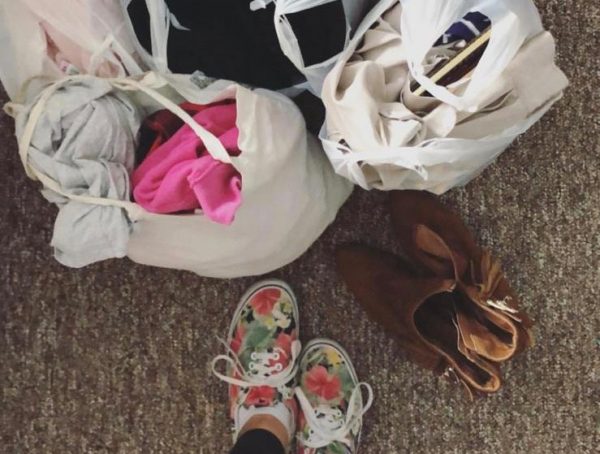Anchor: It’s that time of year when we’re all thinking about hot chocolate, resolutions, and… our bank accounts – our poor bank accounts that take a hit around Christmas and New Year’s Eve. N-C-C News reporter Laila Abdalla explored one of today’s most popular ways of saving money: second-hand shopping, or as kids say, thrifting.
Laila: That’s the price of Eliza’s new shorts. They’re Tommy Hilfiger, and she thinks they look perfect on. Where to get Tommy shorts for fiveL bucks? At Eliza’s favorite resale store in Syracuse: Thrifty Shopper. As Eliza is going through the racks, she says there is one thing all thrift shoppers have in common: Patience.
Eliza: Because it takes a lot of time to go through everything and you never know hat you’re going to find.
Laila: Eliza is actually a senior in college in Germany, which is her home country. She spent a semester abroad at Syracuse University, and has been visiting at least four times a year ever since. She considers C-N-Y to be her chosen home, and is always excited reunite with her American boyfriend, and her other true love: thrift shopping. She really enjoys the resale stores here, but second-hand shopping has always been a part of her life – even back in Germany
Eliza: So I started thrift shopping all the way back when I was a kid, because my dad used to take me to flea markets and my parents both were into flea markets.
Laila: And even though it’s something many people rejected in the past, Eliza wasn’t really aware there is a stigma around it.
Eliza: My mom actually told me about that when I was growing up and she was like maybe don’t tell everyone that you’re wearing second-hand clothes because not everyone thinks it’s cool or likes it. People might think it’s dirty or gross or cheap. But I actually get a lot of compliments and a lot of people ask me about my clothes.
Laila: And Eliza loves saying she got her clothes at the thrift store. Her main motivation behind shopping at resale stores is finding pieces that have a story behind them.
Eliza: I know now that thrift shopping is some sort of like sustainable clothes shopping, so that’s good too and that adds another reason, but my main reason is to find unique pieces that no one else has.
Laila: Jennifer Le Zotte, who wrote a book about the evolution of second-hand shops, would agree. She thinks it’s important that people who frequently thrift understand that it is not the ideal answer to fast-fashion.
LeZotte: People consider buying second-hand to be a way of ethical consumption, but of course you’re still participating in that system by keeping up with ideas of novelty in clothing, and so many tons of clothing are donated to places like Goodwill and Salvation army that there is really not nearly enough second-hand consumers within the United States to absorb that.”>
Laila: Angela Lane works as a cashier at a Goodwill store in Syracuse.
Lane: Things that we cannot resell we send to our clearance center and if it’s too damaged, then we just write it off.”>
Laila: …which means they get rid of it. But a lot of people do seem to believe that second-hand shopping is better for the environment than fast-fashion, and Adele Meyer from the Association of Resale Professionals agrees.
Meyer: You’re recycling when you buy resale items. And you’re keeping things out of the landfill.”>
Laila: She says the resale industry has grown by seven percent in the last two years alone. Lane, the Goodwill cashier, even noticed this.
Lane: Our percentage of shoppers has increased greatly.
Laila: Experts like Le Zotte think pop culture and media attention are mainly what normalized thrift shopping. As Macklmore put it, even if you’ve .. your … you can buy really cool pieces. Your wallet will thank you, and you’ll sleep a little better at night knowing you recycle clothes. But if you want a completely clear conscience, Le Zotte suggests you look into sustainable brands. Disclaimer: your bank account will not like that option as much.
Laila Abdalla, N-C-C News.






